The furniture industry has become an increasingly competitive industry.
Besides brick-and-mortar neighbourhood stores and Swedish furniture giant IKEA, people in Singapore are also spoilt for choice with options from e-commerce sites.
You can now ship furniture directly from source countries like China to create your ideal Scandinavian or Japanese teahouse vibe at home without spending a bomb.
Despite such intense competition, Scanteak, a homegrown furniture brand, has persevered in selling only solid teak wood furniture that comes with sleek designs.
In fact, Scanteak's design and craft are also inspired by "Scandinavian ideology, whereby simplicity and functionality take precedence".
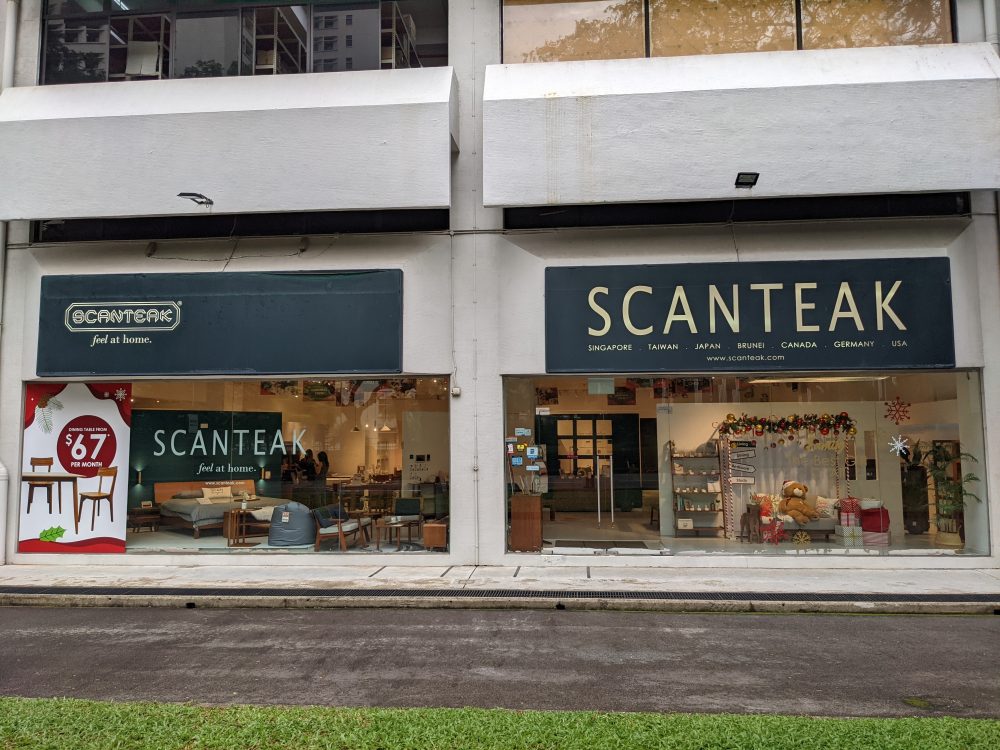 Scanteak showroom at Henderson Road. Photos by Zheng Zhangxin.
Scanteak showroom at Henderson Road. Photos by Zheng Zhangxin.
Despite the price, Scanteak remains one of the leading furniture brands in Singapore.
So what's its appeal and, most importantly, why is Scanteak furniture worth the money spent?
We sat down with its second-generation owner Jamie Lim to find out more.
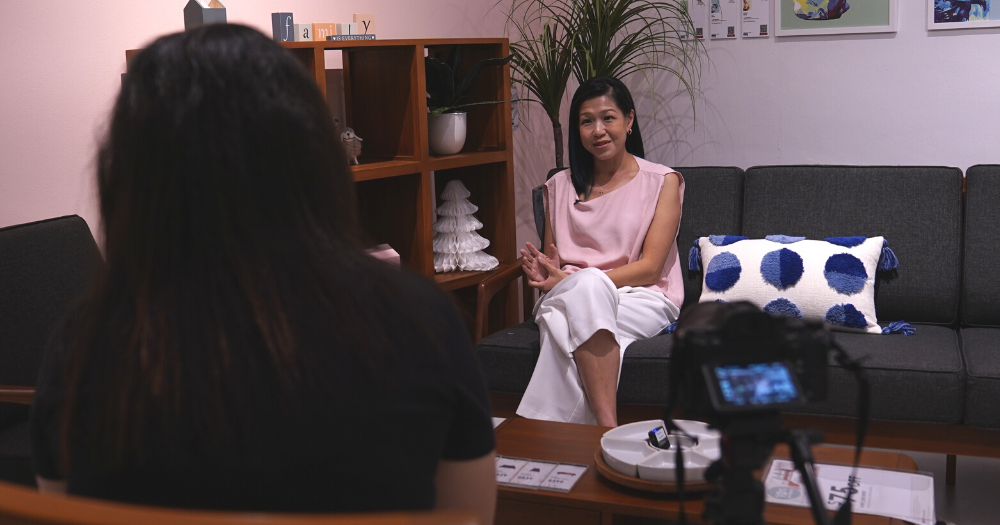 Photo by Andrew Wong.
Photo by Andrew Wong.
What's unique about Scanteak furniture?
People who seek out for teakwood furniture like those sold at Scanteak appreciate the strength and durability of such hard wood products.
The natural oil content in the wood helps to prevent termites infestation and repel water.
Furthermore, Scanteak has been using sustainably sourced teakwood to produce their furniture since 2014.
This teakwood from Indonesia is verified by its national timber legality assurance system called the Sistem Verificasi Legalitas Kayu, or SVLK in short.
While "sustainability" is a buzzword today, it wasn't the case back then when Lim made the decision.
"[The change] was very difficult," Lim admitted as Scanteak had to break partnership with a few longtime suppliers.
"But we felt that it was important to what we believed in'," she added as it aligns with the company's mission to create a safe space that makes people feel at home with its furniture.
As the movement to go green catches on, some of these suppliers returned after getting their wood supply certified to be from legal plantations.
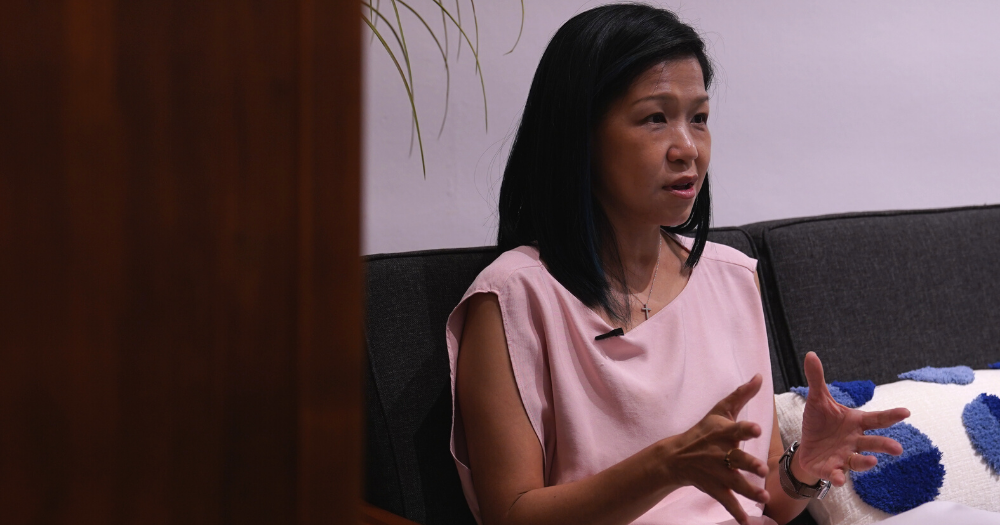 Photo by Andrew Wong.
Photo by Andrew Wong.
Besides going big on sustainability during a time when the majority of consumers do not care about the environment as much, Scanteak also does rigorous formaldehyde testing on their furniture and ensure the levels of formaldehyde adhere to CARB (California Air Resources Board) regulations.
Formaldehyde is a chemical commonly used in household products, including the furniture.
The colourless gas can be recognised from its pungent smell, and can cause irritation to the skin, eyes and nose to some people.
Singapore does not have strict regulations on formaldehyde, unlike countries like the U.S., Taiwan and Japan, but Scanteak took the effort to keep the formaldehyde levels low in the interest of its consumers.
Incorporating ideas from Taiwan and Japan
You may be surprised, but this homegrown furniture brand has established itself in countries like Taiwan and Japan in the past 40 years, with over 100 outlets globally now.
Eagle eyed viewers would have noticed Scanteak's appearance in popular Netflix show "Alice in Borderland".
Furniture designs from Scanteak were also inspired by the needs of the people in countries where it sets foot in.Lim shared interesting insights like how the Taiwanese like their wood to be solid: "They like to be able to see to feel to carry the they need to know that when they buy a teak wood furniture home, it's substantial."
For the Japanese who live in smaller homes, they like their furniture to be "sleek, and thin, and airy, but they love the wood".
This is how Scanteak comes out with nifty furniture designs like this bench inspired by the Japanese lifestyle.
Users can just swivel the backrest to face the TV in the living room after having their meal at the dining area or kitchen.
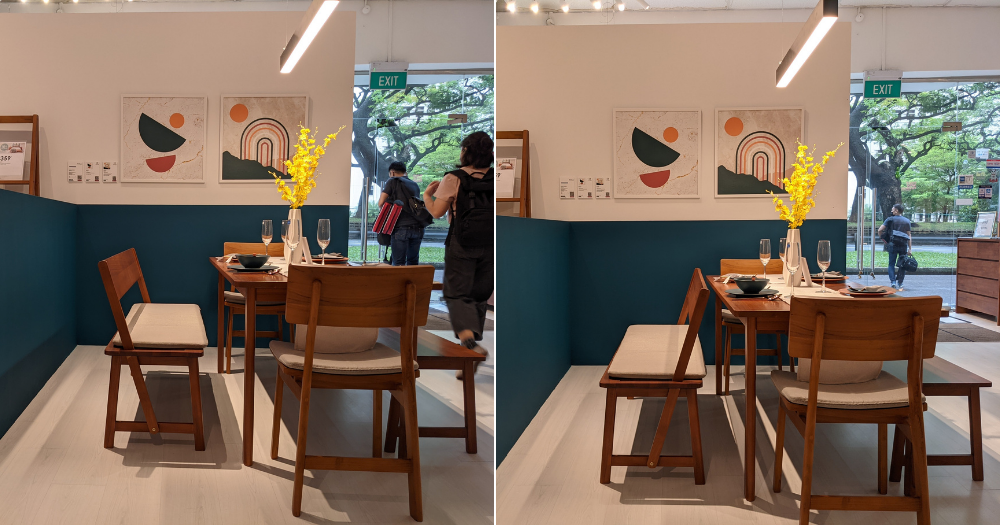 Photos by Zheng Zhangxin.
Photos by Zheng Zhangxin.
As for Singaporeans?
"Singaporeans are very diverse," Lim described.
This is why you can still find both thick pieces of furniture and the ones that younger generations prefer -- thinner, lighter and round-edge furniture -- in their Singapore outlets.
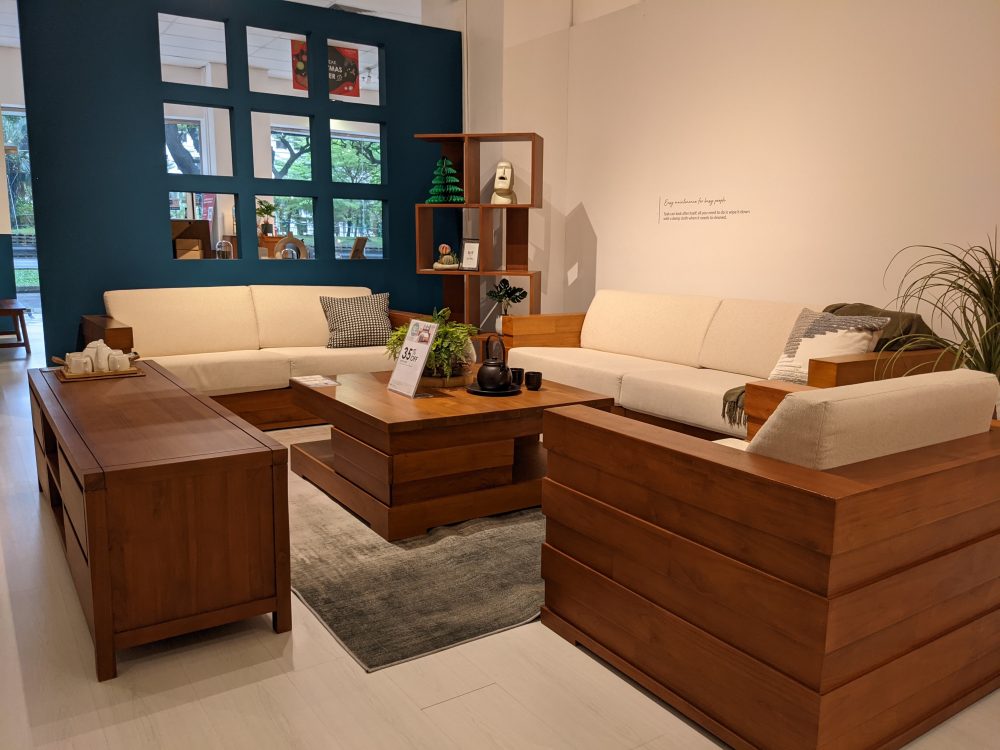 This piece of furniture was designed by Lim and her father. Photos by Zheng Zhangxin.
This piece of furniture was designed by Lim and her father. Photos by Zheng Zhangxin.
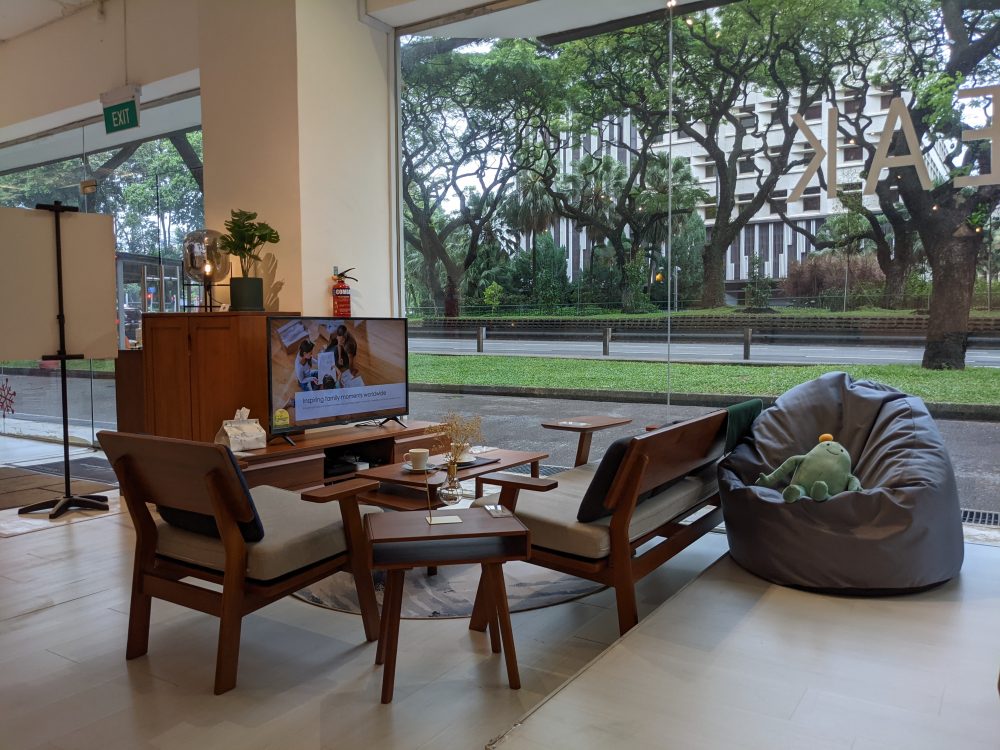 Photos by Zheng Zhangxin.
Photos by Zheng Zhangxin.
Her belief in local talents
Lim does not just look abroad for ideas, she also injects new life into Scanteak by collaborating with local brands and talents, including students.
And after years of working with young Singaporeans, Lim also has some interesting stories to tell.
One of which involves her overhearing interns criticising Scanteak's Instagram account in the toilet without knowing that she was in one of the cubicles.
Lim said that they were young and forgot that walls have ears as she heard them saying: "Wah Scanteak's Instagram account cannot make it leh, damn ugly you know. No wonder got no followers."
Needless to say, when Lim walked out of the toilet cubicle and asked "Very ugly meh?", the interns jumped.
"Their faces were white," Lim laughed.
Unlike what the interns had expected, Lim did not take offence at what they said.
Instead, she tasked the interns to help improve Scanteak's Instagram with an allocated budget, and they did.
The students were even treated to a great meal at the end of their internship.
Lim's support for local brands and talents is evident at their new experiential showroom along Henderson Road.
From beanbags to candles, the furniture is accompanied by lifestyle products of local brands.
The entire space was also designed by students from Ngee Ann Polytechnic School of Design.
Scanteak had also worked with students from Nanyang Academy of Fine Arts (NAFA) to design pieces of furniture which they commercialised and even sold them in Taiwan and Japan.
"I was like a naughtier kid last time so I feel I can relate to some of the ideas from younger people. Not to say I'm very old. It's just that they're fresh set of eyes. We do work with consultants but when these young students give us fresh ideas, we can incorporate them into what we would like to do to stay relevant."
Lim added that her next step is to bring local brands overseas, using the space at Scanteak's overseas outlets to showcase local designs and products, just like the one at Henderson Road.
"I believe in local talents," she said firmly.
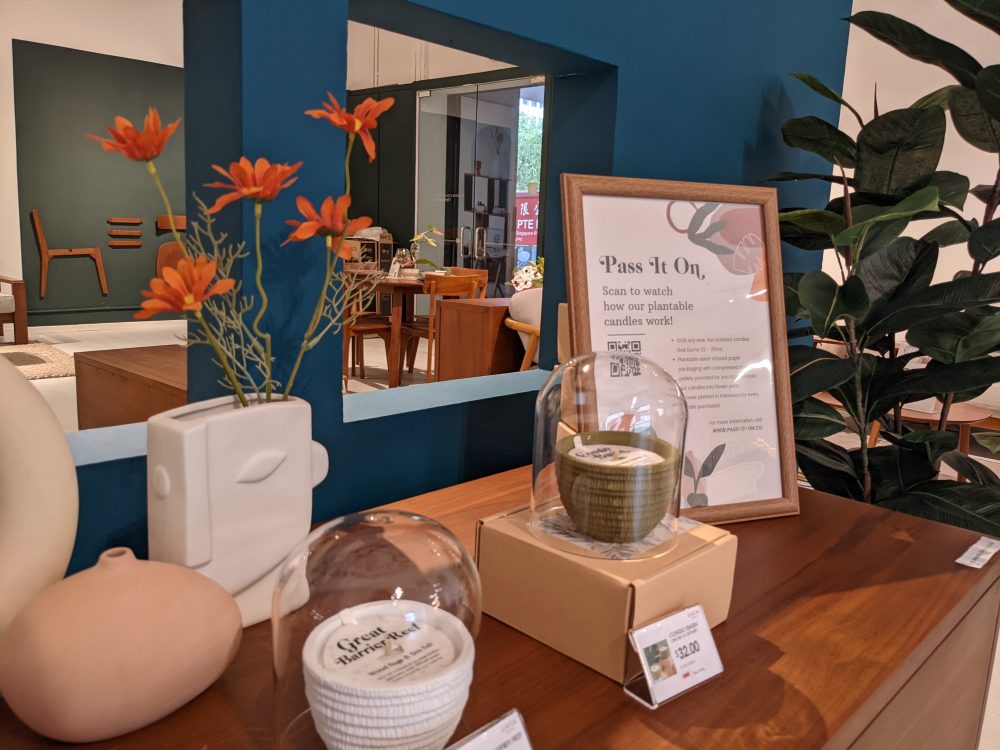 Pass-it-on plantable candles. Photos by Zheng Zhangxin.
Pass-it-on plantable candles. Photos by Zheng Zhangxin.
"There is audience for everything"
If whatever you've read thus far still does not convince you Scanteak's furniture is worth its price, that's totally fine.
Perhaps at some point in life you will come to appreciate Scanteak's furniture better, just like Lim herself.
"There is audience for everything," Lim said.
She admitted that she was into IKEA products when she was a student because that was what her budget allowed.
However, after having three kids and a dog, she now values durable furniture that looks good and is sturdy.
The upkeep of good quality furniture at home is much fuss free and you probably don't have to change furniture once every few years.
With that, here's a final pitch from Lim to current and potential homeowners who are looking to buy furniture:
"I would say, give us a chance, you can check us out. If you want to use this furniture for more than two years, three years, four years, five years, and you put the cost together, I think our prices are pretty comparable. And we can only do it because we are using economies of scale, which means we buy a lot of pieces and we sell to hundred over stores, that's how we can try to keep prices competitive."
Top image by Andrew Wong
If you like what you read, follow us on Facebook, Instagram, Twitter and Telegram to get the latest updates.
